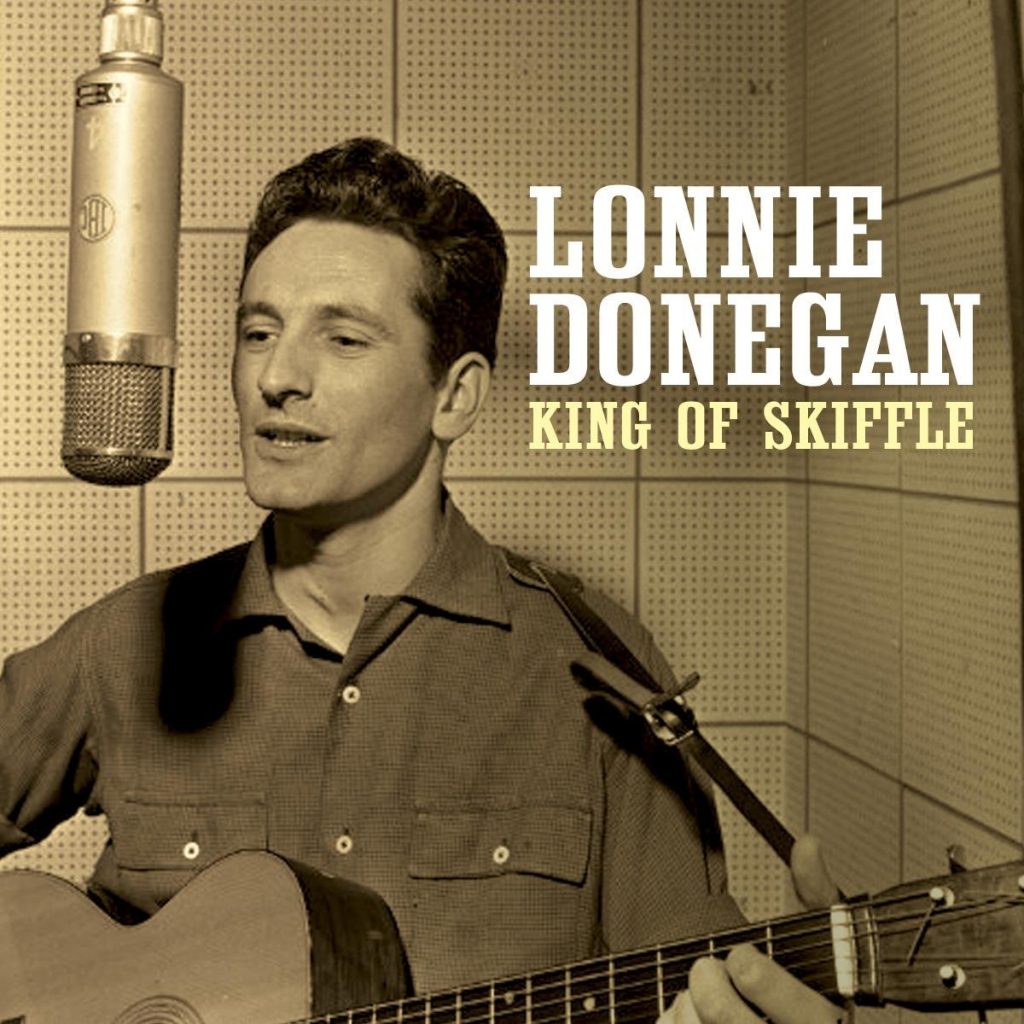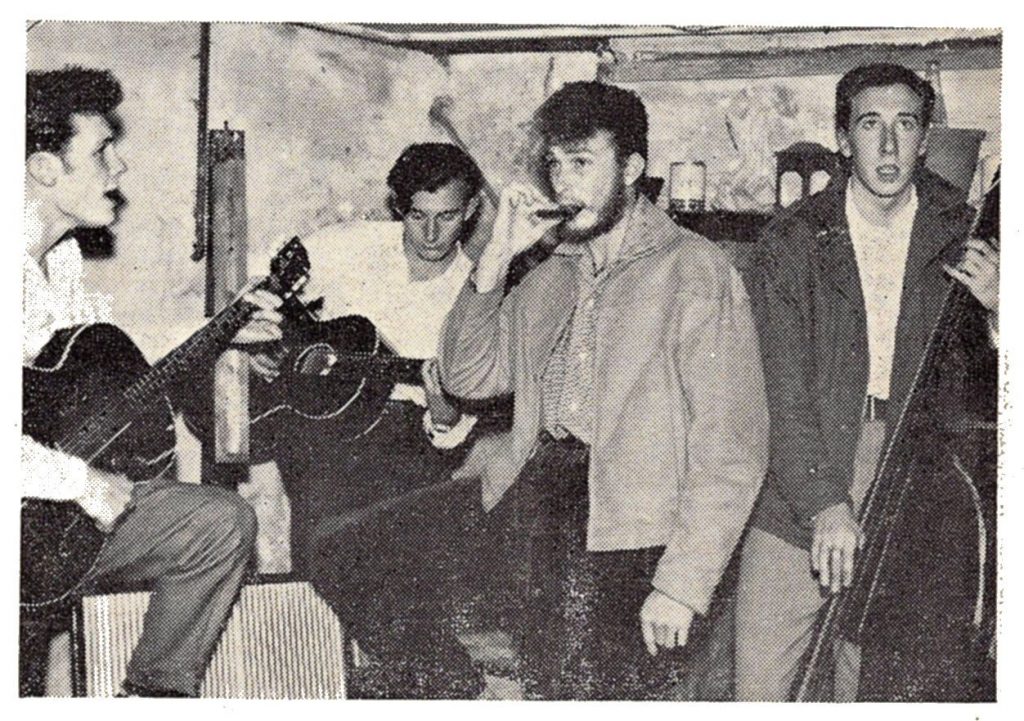
Lonnie Donegan was the King of Skiffle. In the 1950s he played some great country blues songs like Rock Island Line, Stewball, Midnight Special, Mule Skinner Blues… but he never had the chance to play with a blues harp player.
30 years later Lonnie got more recognition for what he has achieved and made a tribute album with Rory Gallagher, Elton John, Brian May Ringo Starr and Leo Sayer on blues harp.
One of my favourite Donegan recordings is one called “I’m a Roving Rambler” and earlier this year I was playing this track for my friend , Marty McFly, who was over from Chicago. I said I thought it was crying out for a bit of blues harp.
Here is how it starts….
Marty was playing around with his valve amplifier at the time and suddenly there was a blue flash and some white smoke and he disappeared. The clock was about to strike midnight so I sorted out the amplifier. I plugged it back in and it sparked, crackled back to life and the valves (tubes) started to glow.
Suddenly Marty reappeared looking all excited. He said that when the smoke cleared after the explosion he had found himself in the studio with Lonnie Donegan, back in 1956. And then, just as they finished recording a take of Roving Rambler, he had a blackout and when he woke up, he was back in the UK with me again in 2020.
It did not make any sense to me or my other friend, “Doc“ Brown. Then I noticed that there was an alternative, previously unreleased take on the CD I was listening to. I played the track and I began to wonder if it might have been true. Have a listen….
Who do you think is playing harp on the recording?
The answer is at the end.
It wasn’t Michael J. Fox!
More Skiffle information.
I have been through a few hundred Skiffle tracks from the 1950s from the UK, in the last few weeks, looking for any bands that featured the harmonica with little success. What I found was that the only person playing anything like blues harp at this time was Cyril Davies.
Cyril recorded sessions with Beryl Bryden and his own group with Alexis Korner which played at the Skiffle, and the Barrelhouse and Blues Club at the Round House Club in Soho. Cyril eventually became the friends with Sonny Terry and James Cotton on their trips to the UK and he moved to amplified harp and in 1962 he and Alexis recorded the ground breaking “R&B at the Marquee” which helped to launch the British Blues Boom.
Other examples of harmonica in Skiffle bands include Chris Barber on the “Backstairs Session” and some melodic chromatic solos by John Wadley Original Barnstormers Spasm Band. In the mid 1960s the blues music scene split into pop music and a more traditional blues scene in the folk clubs where many good blues harp players could be heard.
Skiffle came out of the British interest in US country blues and traditional jazz. The interest in American music of the people went back before the Second World War and was heightened during the war period with the mixing of American servicemen, coloured and white, and their music and recordings, with the British people. One attraction was the associated dances. After the war, British traditional jazz bands were formed and regular venues were established where you could listen, dance and even get to play.
By the early 1950s this had become very popular and the bands of Ken Colyer, Humphrey Littleton, Sandy Brown and Chris Barber were well established. It was quite normal to have a beer break and in this interval, some of the musicians would get together and play songs by Leadbelly, Woody Guthrie, the Jug Bands, and other country blues numbers. The instrumentation was very basic – guitars, a wash-tub bass and maybe a suitcase for percussion. As the Chris Barber Band started to play concerts in the big theatres they included some of their interval “skiffle” music into their performances. These songs were led by their banjo player, Lonnie Donegan, who played guitar on these songs. It was the unexpected success of their recording of their concert version of Leadbelly’s “The Rock Island Line” which launched Skiffle as a mainstream music style.
The success of the recordings by professional bands led to the proliferation of skiffle bands in youth groups, church groups, scouts and schools. They were the sort people who had previously started harmonica groups.

The Pioneer Skiffle Group of Sidcup, Kent.
The Harmonica is an ideal instrument for taking the melody line with the usual skiffle backing of guitar, bass, drums and piano. The instrument is regularly featured by the popular Pioneer Skiffle Group, shown in this photograph sent to us by Mr. K. S. B. Clark of Sidcup. From Harmonica News, December 1957
The fire of the Skiffle movement burned brightly for three or four years but it became much more of a pop music style. Out of the ashes of Skiffle came many young people who had got a taste for performing and playing guitars and they started to make their own Rock and Roll and Blues music, the Beatles, the Shadows, Jimmy Page …
Skiffle still lives on. There is a band called The Lonegans who play around the South East of England and raise money for the MIND Charity. Lonnie Donegan’s son Peter is a well known musician and singer of Country Music.
The harp player on the Lonnie Donegan track is Joe (one-take) Filisko – www.joefilisko.com !